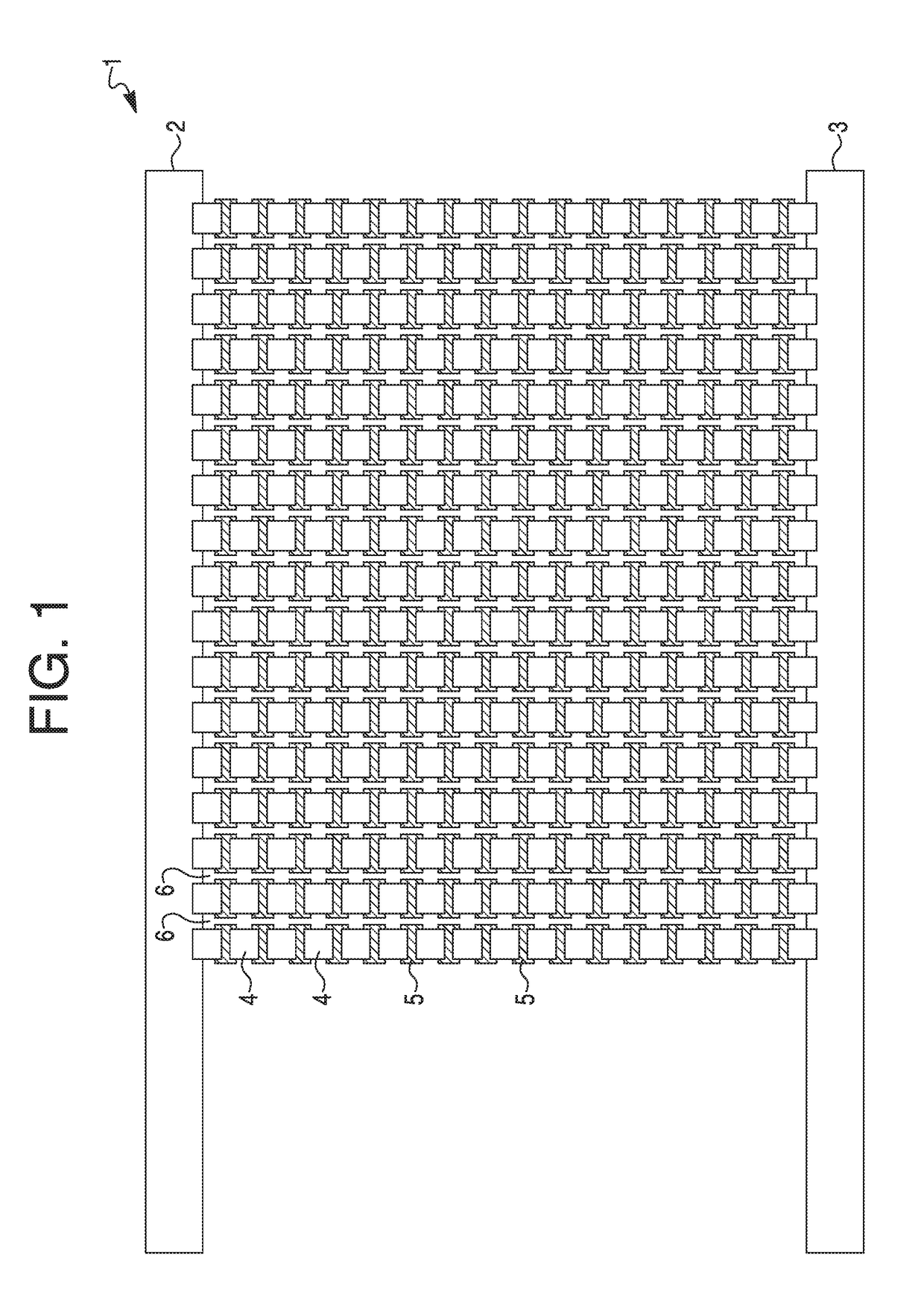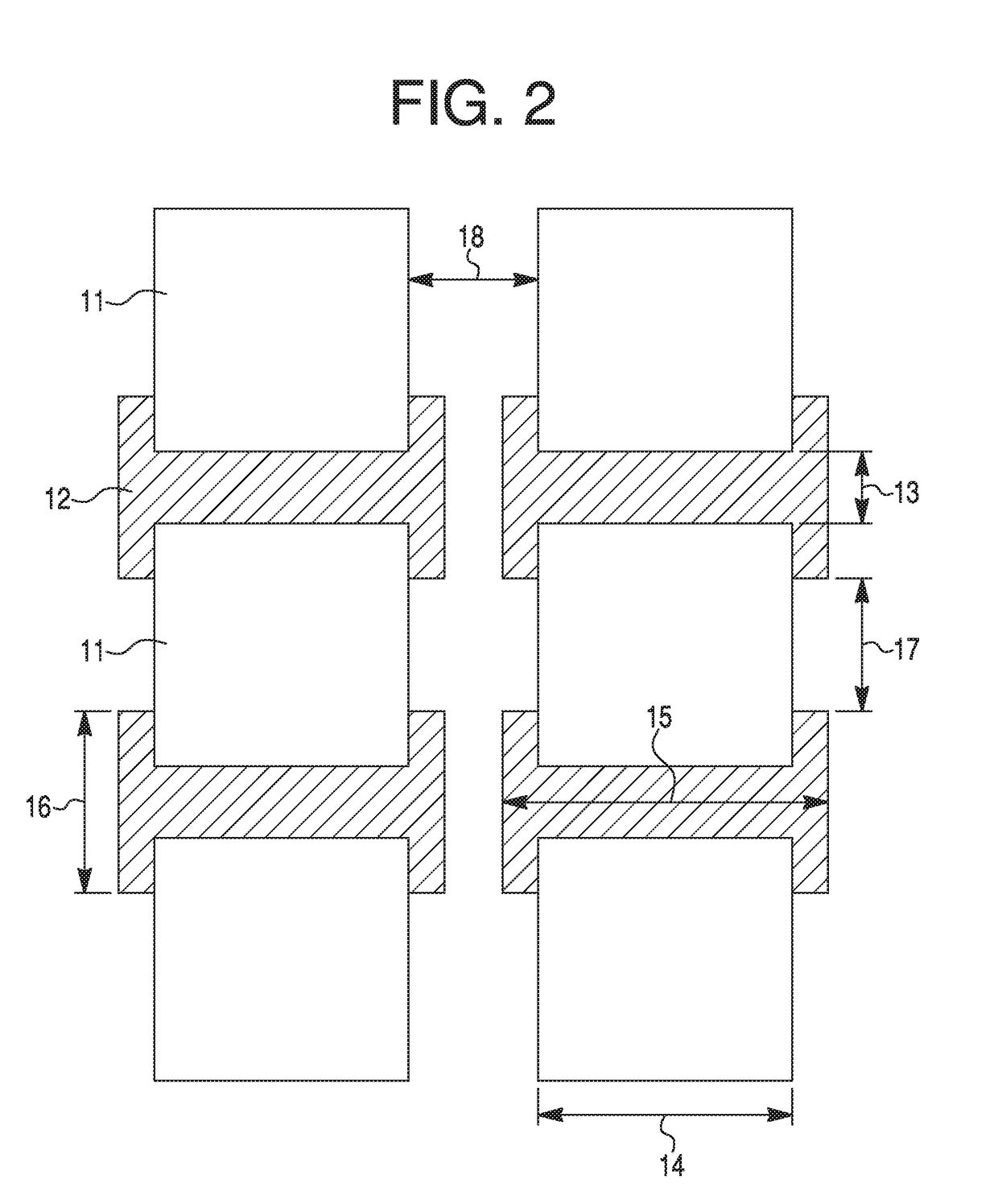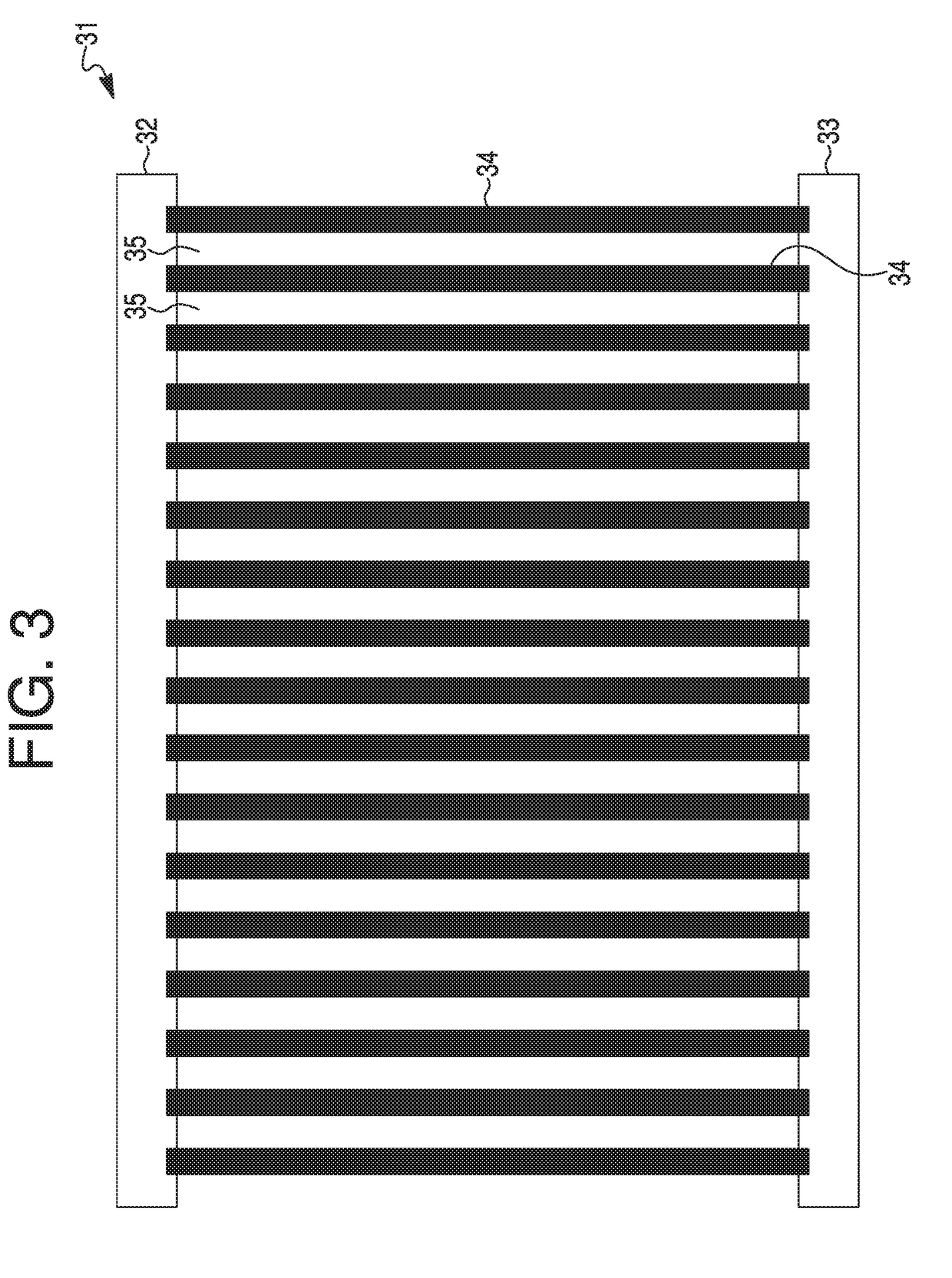Printable heaters to heat wearables and other articles
a technology of wearables and heaters, applied in the field of improved printable heaters, can solve the problems of difficult to print resistive material layers with appropriate thickness and uniformity using currently available compositions, wires rendering garments uncomfortable, and heaters are relatively high
- Summary
- Abstract
- Description
- Claims
- Application Information
AI Technical Summary
Benefits of technology
Problems solved by technology
Method used
Image
Examples
example 1
[0053]A heater with the Configuration A shown in FIG. 1 was made and tested. The overall dimensions of the heater were 250 mm in width and 170 mm in height. The heater was printed on a clear thermoplastic polyethylene terephthalate (PET) substrate with a thickness of 0.2 mm. Referring to FIGS. 1 and 2, the printed resistive material rectangles 4 and 11 were made of printed carbon paste (DuPont™ 7105, DuPont Co., Wilmington, Del.) with a sheet resistivity of 22 Ohms / square. The number of resistive rectangles 4 and 11 in each column was nineteen, M=19, and there were forty-eight columns, N=48. There were two identical conductive bus bars 2 and 3, with lengths of 250 mm and widths of 15 mm. There was a 1 mm overlap of the bus bars with the adjacent printed resistive material rectangles. Each column had eighteen electrically conductive printed rectangles 5 and 12. The bus bars and the conductive rectangles were made of printed silver paste (DuPont™ 5025 Silver Conductor, DuPont Co., Wil...
example 2
[0056]A heater with the Configuration C was made and tested. The heater was printed on a clear thermoplastic polyethylene terephthalate (PET) substrate with a thickness of 0.2 mm. The printed resistive material columns were made of printed carbon paste (DuPont™ 7105, DuPont Co., Wilmington, Del.) with a sheet resistivity of 22 Ohms / square. There were forty-eight resistive material columns, N=48, and each column had a width W of 4 mm. The lateral distance between columns was 1 mm. There were two identical conductive bus bars with lengths of 250 mm and widths of 15 mm. Each resistive material column overlapped and made electrical contact with the bus bars. There were 18 conductive rectangles spaced uniformly along the length of a column of resistive material. Each conductive rectangle had a width w of 4 mm and length l of 3 mm. The bus bars and the conductive rectangles were made of printed silver paste (DuPont™ 5025 Silver Conductor, DuPont Co., Wilmington, Del.) with resistivity of ...
PUM
 Login to View More
Login to View More Abstract
Description
Claims
Application Information
 Login to View More
Login to View More - R&D
- Intellectual Property
- Life Sciences
- Materials
- Tech Scout
- Unparalleled Data Quality
- Higher Quality Content
- 60% Fewer Hallucinations
Browse by: Latest US Patents, China's latest patents, Technical Efficacy Thesaurus, Application Domain, Technology Topic, Popular Technical Reports.
© 2025 PatSnap. All rights reserved.Legal|Privacy policy|Modern Slavery Act Transparency Statement|Sitemap|About US| Contact US: help@patsnap.com



